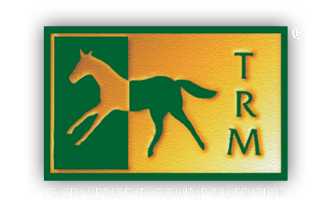
Electrolytes & horse - A necessity not a luxury!
Electrolytes are charged particles, which when dissolved in water or body fluids produce positive (cations) and negative (anions) ions. These ions have a crucial role in maintaining normal health and functioning of the body in a horse.
They ensure smooth working of enzymatic pathways, nervous, cardiac, musculo-skeletal and even digestive system, apart from also helping maintain osmotic pressure and fluid balance. As a result, a balanced homeostasis (body’s ability to maintain a stable internal environment) is achieved.
The 5 major ions required by a growing and an adult horse include sodium (Na+), potassium (K+), chloride (Cl–), calcium (Ca2+) and magnesium (Mg2+).
Functions of the major ions:
- Sodium (Na+)
Most abundant extracellular ion, maintains blood pressure and nerve impulse, replenishes negative sodium levels due to sweating while exercising, working and in conditions like diarrhoea.
- Potassium (K+)
Present as intracellular ion, maintains nerve impulses, cardiac health and in conjunction with Na+ ensures osmotic and acid-base balance.
- Chloride (Cl–)
Most significant extracellular anion, helps maintain isotonicity and co-exists with sodium to maintain fluid balance.
- Calcium (Ca2+)
Present as extracellular ion, regulates membrane potential (neuromuscular) which is crucial for muscle contraction and relaxation including the cardiac muscles.
- Magnesium (Mg2+)
Second most abundant intracellular cation, works as co-factor of various enzymatic activities in numerous metabolic pathways, phosphate transfers, muscle contractility and neuronal transmission.


Electrolyte loss in urine, faeces, and breath is quite common for a horse. Hence, ensuring good quality hay/ grass/ fodder or commercial feed enriched with these electrolytes and other nutrients to replenish the loss, is a must.
During training and exercise, energy requirements are met by anaerobic (in the absence of oxygen) respiration and metabolism of glucose, accumulating high levels of lactic acid in the body, leading to metabolic acidosis.
To tackle this, fluid shifts with active exchange of ions between blood and tissues occur, significantly altering the normal electrolyte-fluid balance. Hence, it becomes a critical parameter to keep an eye on, for a working horse, where major electrolytes like Na+, K+ and Cl– are massively lost in the form of sweat.
Rehydration with water and correct levels of electrolytes is required, restoring the body’s fluid-ion balance.

Signs of Electrolyte imbalance:
- Slow recovery rate
- Lethargy
- Poor performance
- Muscle damage (stiffness, cramping, polysaccharide storage myopathy (PSSM))
- Slow capillary refill
- Reduced urination
- Diarrhoea or constipation
- Kidney damage
At all times and in particular if supplementing your horses’ diets orally with electrolytes, fresh water should be available to the horse. Offering tepid water as opposed to very cold water is preferred to avoid colic and ensure quick rehydration.
The best replacement therapy is to ensure consistent, continues and correct concentrations of salt/electrolyte intake whilst the horse is in work or hot weather conditions and not just around competition, or extreme heat.

